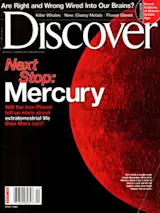While the Spirit and Opportunity rovers search Mars for evidence of a watery past, planetary geologist Jim Head of Brown University is showing that water is very much a part of the planet’s present. Satellites circling the Red Planet have found evidence of convulsive ice ages that continue to reshape the rusty surface.
Images from three Mars-orbiting probes—NASA’s Mars Global Surveyor and Mars Odyssey and the European Mars Express—tell the frozen tale. Vast accumulations of dusty ice appear from the poles to the midlatitudes; in some places the ice has seemingly formed glacierlike tongues more than a half mile wide. At the poles, gamma-ray data from Mars Odyssey show high concentrations of hydrogen—“the icing on the cake,” Head says. Hydrogen generally denotes the presence of ice, a finding corroborated by Mars Express.
Taken together, the evidence points not only to water but also to water on the move. Head and ...














